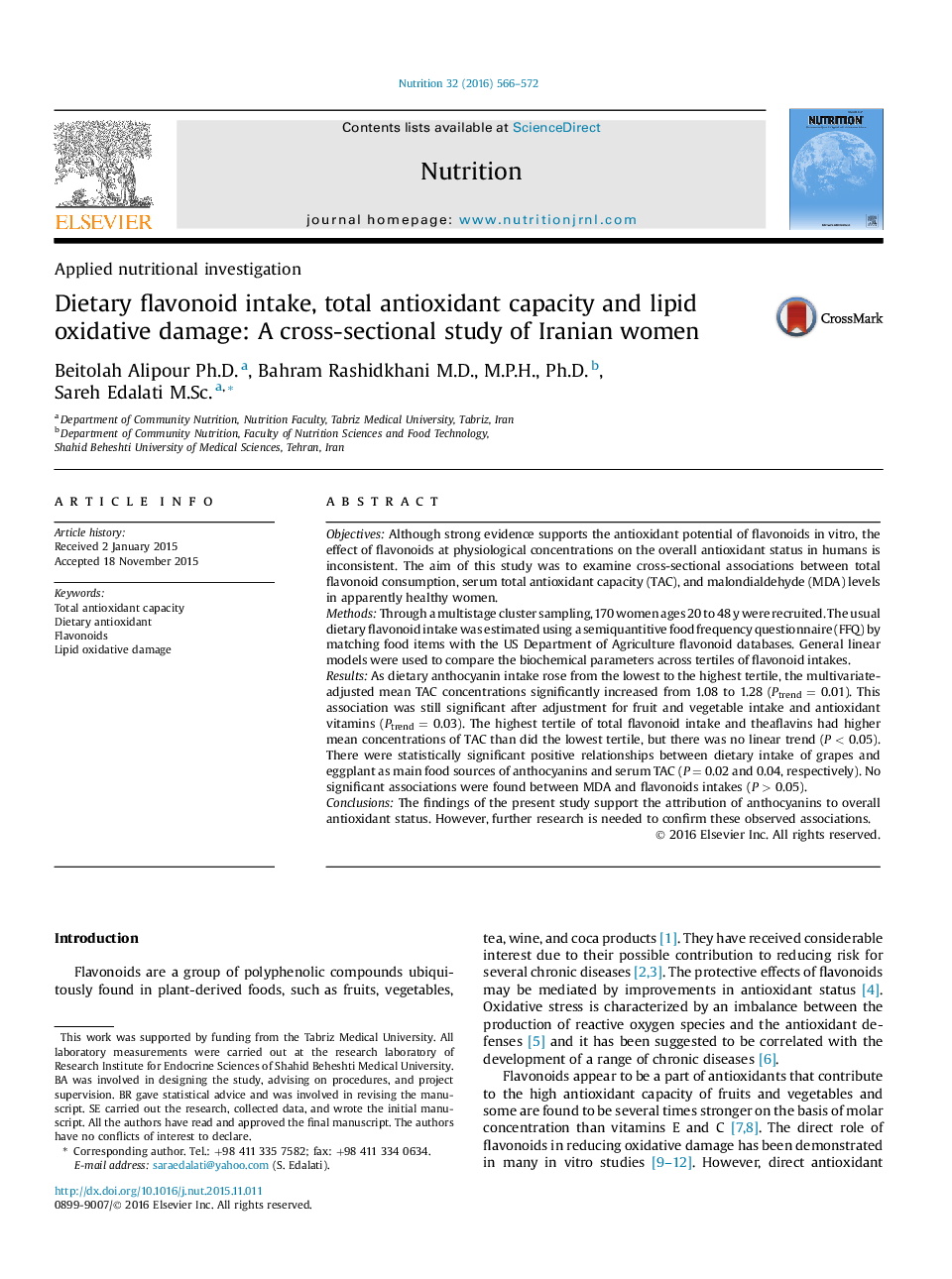| Article ID | Journal | Published Year | Pages | File Type |
|---|---|---|---|---|
| 3276252 | Nutrition | 2016 | 7 Pages |
•Usual dietary anthocyanin intakes were inversely associated with serum total antioxidant activity (TAC) in apparently healthy women.•Dietary intakes of eggplants and grapes (as two main sources of anthocyanin) were inversely associated with TAC in apparently healthy women.•Flavonoid intake was not associated with lipid oxidative damage in apparently healthy women.
ObjectivesAlthough strong evidence supports the antioxidant potential of flavonoids in vitro, the effect of flavonoids at physiological concentrations on the overall antioxidant status in humans is inconsistent. The aim of this study was to examine cross-sectional associations between total flavonoid consumption, serum total antioxidant capacity (TAC), and malondialdehyde (MDA) levels in apparently healthy women.MethodsThrough a multistage cluster sampling, 170 women ages 20 to 48 y were recruited. The usual dietary flavonoid intake was estimated using a semiquantitive food frequency questionnaire (FFQ) by matching food items with the US Department of Agriculture flavonoid databases. General linear models were used to compare the biochemical parameters across tertiles of flavonoid intakes.ResultsAs dietary anthocyanin intake rose from the lowest to the highest tertile, the multivariate-adjusted mean TAC concentrations significantly increased from 1.08 to 1.28 (Ptrend = 0.01). This association was still significant after adjustment for fruit and vegetable intake and antioxidant vitamins (Ptrend = 0.03). The highest tertile of total flavonoid intake and theaflavins had higher mean concentrations of TAC than did the lowest tertile, but there was no linear trend (P < 0.05). There were statistically significant positive relationships between dietary intake of grapes and eggplant as main food sources of anthocyanins and serum TAC (P = 0.02 and 0.04, respectively). No significant associations were found between MDA and flavonoids intakes (P > 0.05).ConclusionsThe findings of the present study support the attribution of anthocyanins to overall antioxidant status. However, further research is needed to confirm these observed associations.
